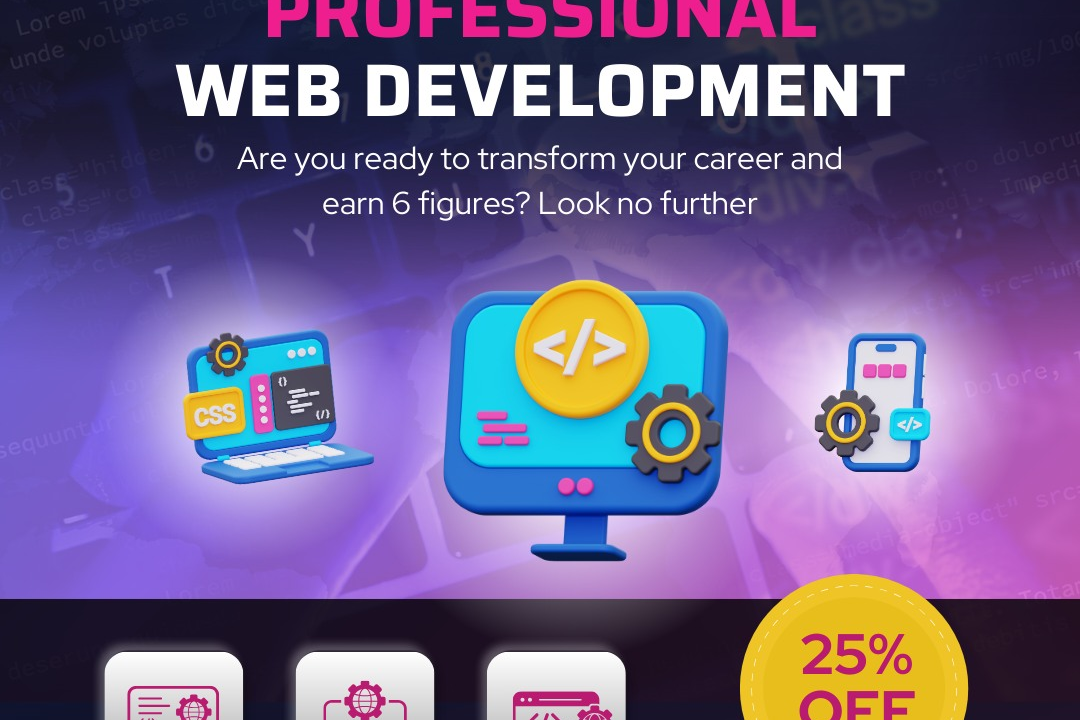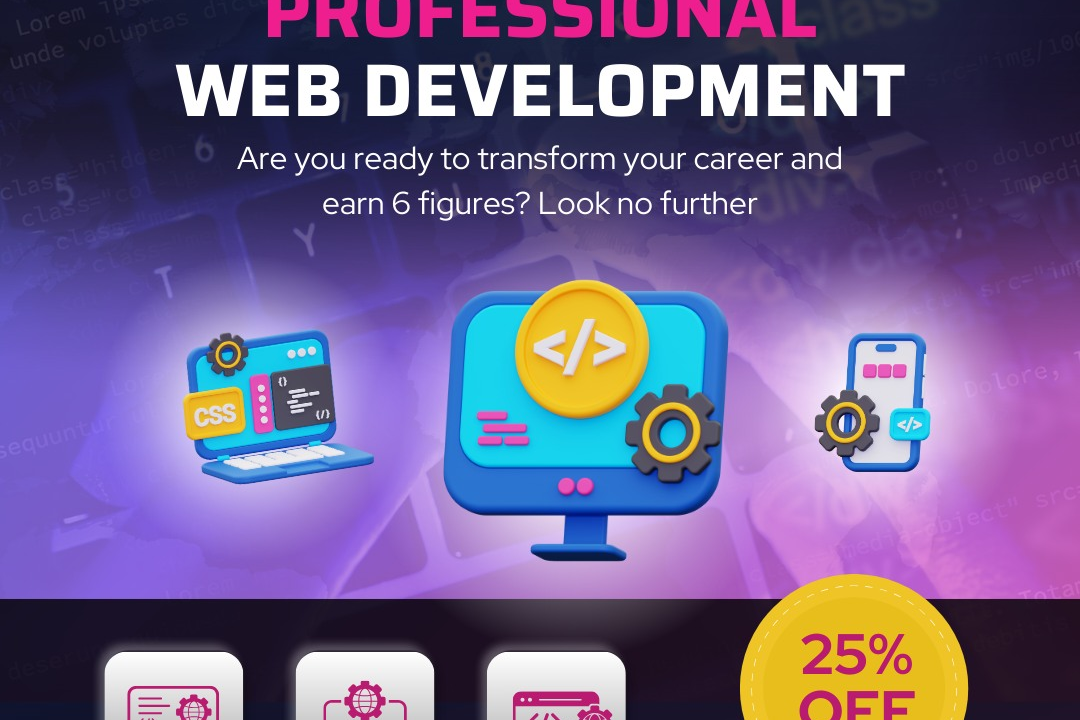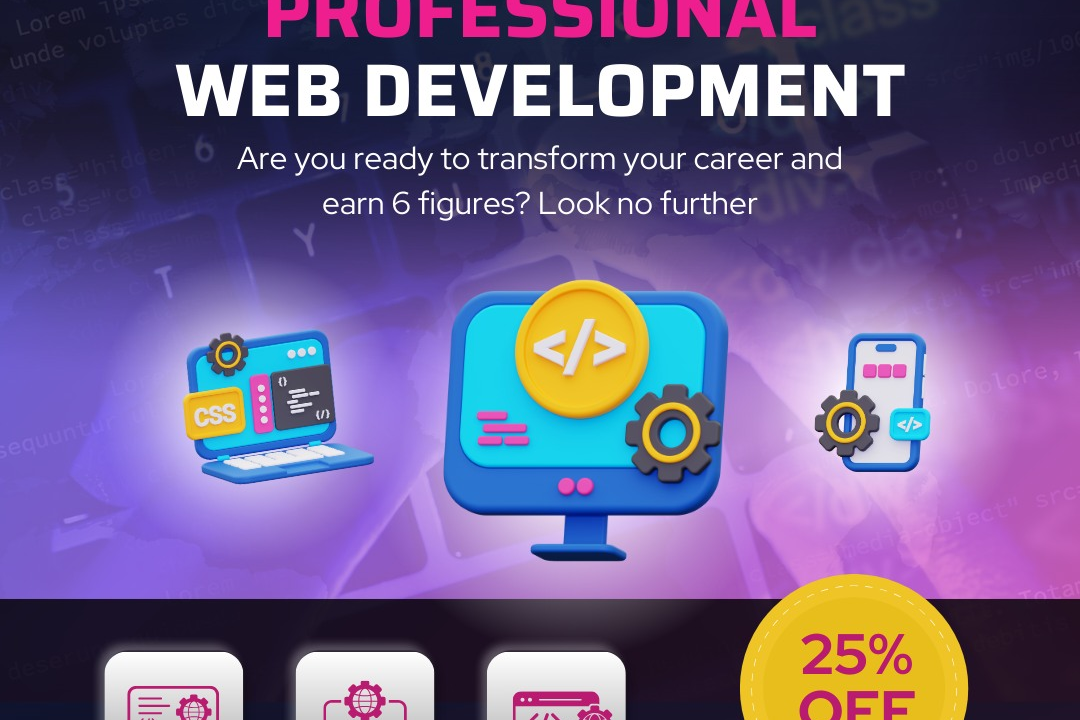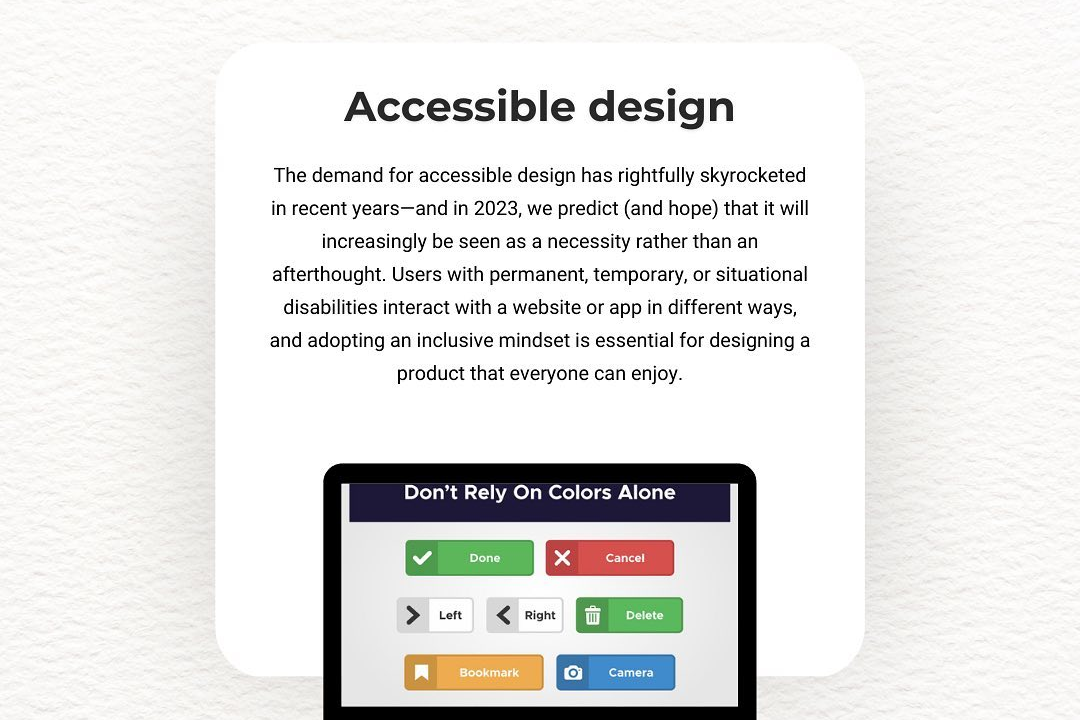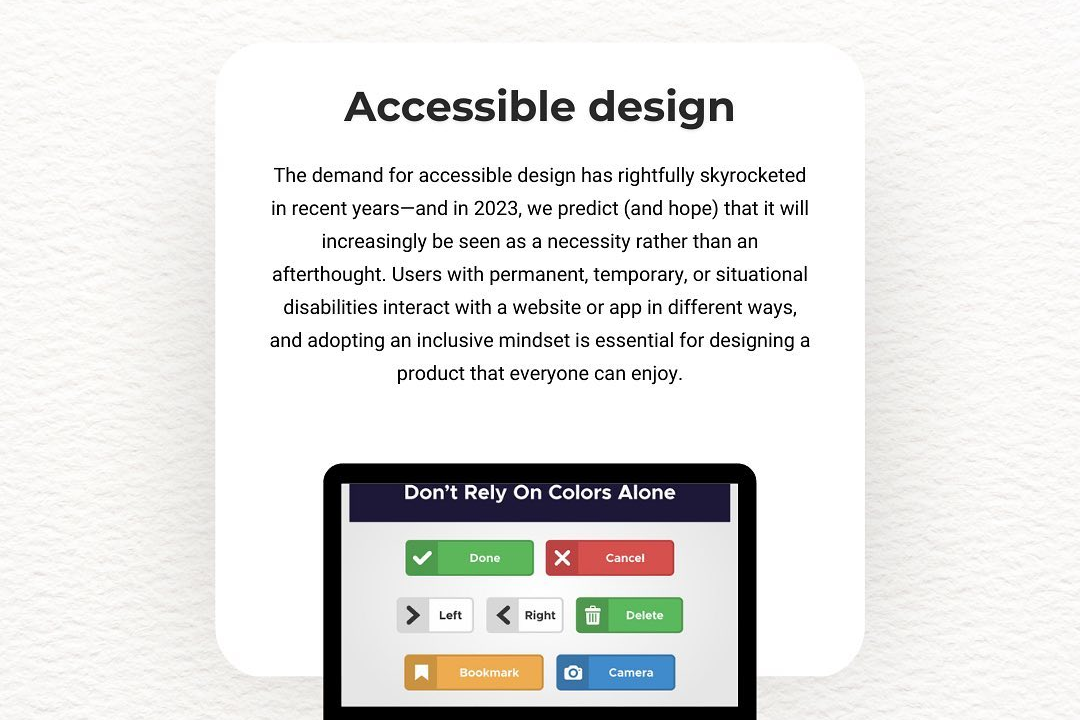For Loop Program in PHP
A for loop in PHP is a control structure that allows developers to execute a block of code repeatedl
For Loop Program in PHP
A for loop program in PHP is a powerful tool that enables developers to efficiently execute a block of code multiple times, making it particularly useful for tasks involving repetitive operations such as processing arrays, generating sequences, or performing calculations. Its structured syntax allows for easy control over the number of iterations, ensuring that tasks are completed accurately and with minimal code. By automating repetitive tasks, a for loop enhances code readability and efficiency, ultimately streamlining the development process and reducing the potential for errors.
To Download Our Brochure: https://www.justacademy.co/download-brochure-for-free
Message us for more information: +91 9987184296
A for loop program in PHP is a powerful tool that enables developers to efficiently execute a block of code multiple times, making it particularly useful for tasks involving repetitive operations such as processing arrays, generating sequences, or performing calculations. Its structured syntax allows for easy control over the number of iterations, ensuring that tasks are completed accurately and with minimal code. By automating repetitive tasks, a for loop enhances code readability and efficiency, ultimately streamlining the development process and reducing the potential for errors.
Course Overview
The ‘For Loop Program in PHP’ course provides a concise introduction to using for loops in PHP, covering their syntax, implementation, and best practices. learners will gain practical skills to write efficient, repetitive code through real-world examples and projects, enabling them to enhance their PHP programming proficiency effectively.
Course Description
Learn how to effectively use for loops in PHP with this course, covering syntax, implementation, and real-world examples to write efficient, repetitive code and enhance your PHP programming skills.
Key Features
1 - Comprehensive Tool Coverage: Provides hands-on training with a range of industry-standard testing tools, including Selenium, JIRA, LoadRunner, and TestRail.
2) Practical Exercises: Features real-world exercises and case studies to apply tools in various testing scenarios.
3) Interactive Learning: Includes interactive sessions with industry experts for personalized feedback and guidance.
4) Detailed Tutorials: Offers extensive tutorials and documentation on tool functionalities and best practices.
5) Advanced Techniques: Covers both fundamental and advanced techniques for using testing tools effectively.
6) Data Visualization: Integrates tools for visualizing test metrics and results, enhancing data interpretation and decision-making.
7) Tool Integration: Teaches how to integrate testing tools into the software development lifecycle for streamlined workflows.
8) Project-Based Learning: Focuses on project-based learning to build practical skills and create a portfolio of completed tasks.
9) Career Support: Provides resources and support for applying learned skills to real-world job scenarios, including resume building and interview preparation.
10) Up-to-Date Content: Ensures that course materials reflect the latest industry standards and tool updates.
Benefits of taking our course
Functional Tools
1 - PHP Development Environment: Students are introduced to various PHP development environments such as XAMPP, WAMP, or MAMP, which provide an integrated setup to write, test, and run PHP scripts locally. These tools simplify server configuration, allowing learners to focus on coding without extensive setup time. Understanding how to use these environments is foundational for executing PHP programs efficiently and debugging effectively during training.
2) Code Editors and IDEs: The course emphasizes the use of popular code editors like Visual Studio Code, Sublime Text, or IDEs like PHPStorm. These tools offer syntax highlighting, auto completion, debugging features, and project management capabilities that streamline the development process. They help students write cleaner code, identify errors quickly, and learn best practices for PHP programming, especially when working with loops in dynamic projects.
3) Web Browsers for Testing: Learners are guided on how to utilize web browsers such as Google Chrome, Mozilla Firefox, or Edge for testing their PHP scripts. Browsers act as the front end interface to view the output of PHP programs after server side processing. The training covers inspecting elements, debugging console, and refresh techniques to ensure that the code designed with for loops functions correctly across different browsers.
4) Version Control Systems: Git is introduced as a crucial tool for managing code versions. Students learn to track changes, collaborate with peers, and revert to previous code states when necessary. Using Git repositories on platforms like GitHub or GitLab encourages good coding discipline and project management, vital for developing complex applications involving loops and real time data handling.
5) Database Management Tools: The course incorporates tools like phpMyAdmin or MySQL Workbench for interacting with databases. Since looping often involves data retrieval and manipulation, understanding how to connect PHP scripts with databases is essential. These tools help students practice writing SQL queries, importing/exporting data, and managing database schemas in tandem with their PHP code.
6) Debugging and Profiling Tools: Tools such as Xdebug or PHP Debug Bar are used to identify and analyze code issues related to for loops, such as infinite loops or performance bottlenecks. These debugging extensions provide step by step execution, variable inspection, and performance metrics, enabling learners to develop efficient, error free code during the training program.
7) Online Learning Platforms and Documentation: Resources like PHP official documentation, Stack Overflow, and online tutorials supplement the hands on training. They serve as reference points for troubleshooting, exploring advanced loop constructs, and understanding best practices. Access to a comprehensive knowledge base encourages continuous learning and self sufficiency among students throughout the course.
8) Project Management and Collaboration Tools: Platforms such as Trello, Slack, or Google Workspace facilitate real time collaboration among students and instructors. These tools help organize project milestones, share code snippets, seek feedback, and participate in group exercises focused on developing loop based solutions for practical problems. This collaborative environment enhances experiential learning and prepares students for industry teamwork dynamics.
9) Localhost Servers and Virtualization Tools: Students are trained to set up and configure local server environments such as Docker, Vagrant, or virtual machines to simulate production like environments. This knowledge ensures that PHP applications utilizing loops and complex logic run smoothly across different deployment settings, fostering adaptability and deployment readiness.
10) Front End Development Tools: The course introduces basic front end tools like Bootstrap, HTML, and CSS editors to help students integrate PHP logic with user interfaces. When working with real time projects involving dynamic content generated through loops, understanding how frontend components interact with server side code is vital for creating seamless, user friendly web applications.
11 - API Clients and Postman: To develop more advanced applications, students learn to test and interact with APIs using tools like Postman. This proficiency allows students to fetch or send data in real time, enabling them to incorporate loop driven logic within integrations and expand their PHP development skills to handle RESTful services effectively.
12) Automated Testing Frameworks: Tools like PHPUnit introduce students to writing automated tests for their PHP code, including those involving loops. These testing frameworks ensure code reliability, facilitate regression testing, and promote best practices for maintaining high quality, scalable PHP projects.
13) Performance Monitoring Tools: Utilization of profiling tools such as New Relic or Blackfire helps students analyze the performance of loop intensive PHP scripts. Monitoring tools assist in identifying bottlenecks, optimizing code efficiency, and ensuring that applications can handle real time data loads effectively.
14) Containerization and Deployment Tools: Training on Docker containers and deployment pipelines prepares students to deploy loop based PHP applications in scalable, isolated environments. This knowledge is critical for managing production workloads, ensuring consistency, and enabling rapid deployment cycles.
15) Security Testing Tools: The curriculum incorporates security testing with tools such as OWASP ZAP or Burp Suite to examine vulnerabilities in PHP scripts, especially those involving dynamic data handling within loops. Learning these practices helps students write secure, resilient code capable of defending against common web threats.
16) Continuous Integration/Continuous Deployment (CI/CD) Tools: Integration of CI/CD tools like Jenkins, GitHub Actions, or GitLab CI automates the testing and deployment process for PHP projects. Students gain experience in setting up automated pipelines that verify loop functionality and overall code health, fostering efficient development workflows.
17) Cloud Platforms and Hosting Services: Knowledge of cloud services like AWS, Azure, or Google Cloud allows students to deploy and manage PHP applications at scale. Understanding how to host loop driven applications in the cloud supports building scalable, real time solutions suitable for enterprise level projects.
18) Code Analytics and Quality Tools: Usage of code analysis tools like PHP_CodeSniffer, SonarQube, or PHPMD enables students to maintain high code standards, identify potential issues early, and ensure their PHP scripts involving loops are following best practices, enhancing maintainability and readability.
19) Project Documentation and Workflow Management: Tools like Confluence, Notion, or Asana support organized documentation and workflow tracking. They help students document their loop implementation strategies, project progress, and collaborative efforts, fostering disciplined project management.
20) Learning Management Systems and Interactive Platforms: Platforms such as Moodle, Coursera, or proprietary LMS facilitate structured learning paths with quizzes, assignments, and internal forums. They support ongoing education, peer interaction, and instructor feedback during the course focused on PHP development with real time project scenarios involving loops and data processing.
Browse our course links : https://www.justacademy.co/all-courses
To Join our FREE DEMO Session:
This information is sourced from JustAcademy
Contact Info:
Roshan Chaturvedi
Message us on Whatsapp: +91 9987184296
Email id: info@justacademy.co

